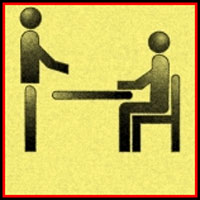In a new series called Experts Ignite, Indus brings you experts in the field of technical writing and related industries who bring new perspectives to our careers and share their experiences. In this first edition Indus presents Scott Weiss, Director of User Experience at Misys, on the user experience (UX) design industry and insights into how technical writers can evolve into UX practitioners or evangelists. He also talks about the prevalence and importance of user experience.
How did you start your career in the user-experience industry, and how has your journey been?
I started as an intern at Apple Computer in 1989, working on Macintosh System 7. After I finished my degree I went to Microsoft, where I was the program manager for Schedule+ for Macintosh, which we know today as Outlook. At Microsoft I also worked in Advanced Windows Services on the product that became Windows 95. I worked at Sybase and Autodesk too, and then started a user experience (UX) agency in New York City that I ran for 11 years. While I was doing that, I wrote “Handheld Usability,” which re-focused my career in mobile usability. Now I’m at Misys, working on financial software, which is the new golden field of opportunity in UX. Banking has so many complex challenges, bringing us a great chance to grow and to see tangible changes in a short time.
How can technical writers evangelize the importance of usability in their organization?
UX professionals tend to find fault in things—that’s what we do. It’s easy to be disliked and avoided with that kind of approach, so it’s better to come up with ways to improve things and to demonstrate it to team members than to criticize their work. Create a new design, make it look nice, and share it. When people see how great it is, they are likely to ask how you did it, which is when the time is right to talk about UX and its benefits. Making graphical posters about target users and putting them up around the office helps a lot. Also, identify UX standards and upload them up to the company intranet, demonstrating how they can help save developers time and reduce customer training time too. Be proactive and helpful—people will notice.
Can you share some tips on how technical writers can prepare a portfolio when they have limited or no experience in the usability industry?
The most important thing is to have a portfolio of work. If someone wants to learn about design, then he or she should start designing. Make a game, or a site, or a blog that demonstrates your ability. Instead of critiquing, re-design. If you don’t like the way your phone works, document it, redesign it, and blog about it. A while back I presented at a World Usability Day event in London about how terrible the Transport For London mobile journey planner was. People were really mad, since everyone loves TFL. Afterward, I spent a lot of time re-designing the mobile solution and then published the designs. People were much more interested in my design work than my critique.
What are the skills that you look for while hiring a UX professional?
The portfolio of work is most important, as well as a positive attitude and great communication skills. So much of what we do is working with people, so really good inter-personal skills are critical.
What are the different types of interfaces where user experience plays or is expected to play a prominent role?
UX is now everywhere. From the controls on a washing machine, to the new internet-enabled televisions, complex user interactions are a part of our everyday lives. One of my college projects was designing the UI for an automobile air conditioning system. And what about the settings on a refrigerator, or household programmable thermostat? Just about everywhere you look, there are user interfaces and UX considerations.
For a UX design or redesign project, what are the main parameters that a company looks at for ROI?
The classics: reducing developer time, reducing customer training time. Reducing customer support call duration and frequency too. It’s all about saving money for ROI.
Scott is presently the Director of User Experience at Misys. He has held the position of Executive Director, HFI, London. His expertise includes Usability, Information Architecture, and Market Research with a specialization in mobile usability. Scott is known world-wide for his leadership in mobile usability design, prototyping, and user testing. He is a seasoned market research and information design professional with significant management experience as well. He is the author of “Handheld Usability” (Wiley: 2002).
Compiled by an STC India volunteer


One Comment
Comments are closed.